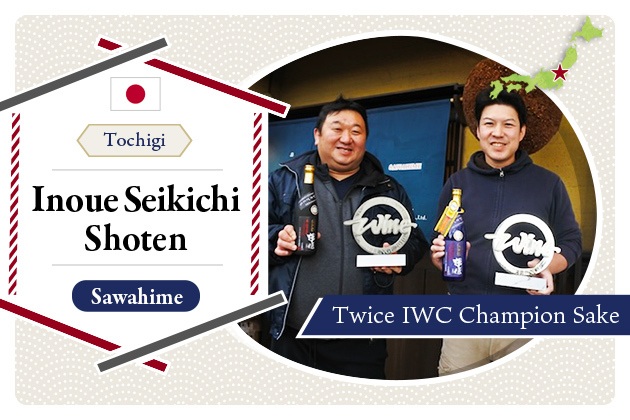
2024.01
31
New Tales of Off-flavors: What is Sake’s Off-flavor? (Part1)
Off-flavor is an odor or taste that is different from the original flavor of a food or beverage. Various off-flavors have been defined in the sake industry, both by the sake competitions and research institutes that evaluate the quality of sake.
However, the diversification of tastes and values has recently given rise to a tendency to view flavors that were previously considered off-flavors as unique. SAKE Street will examine how this is changing from the present to the future, while organizing the definition of off-flavors.
In the first article, Yosuke Kawase, who is in charge of product development at Clear Inc, known for its luxury brand SAKE HUNDRED and a Sake Expert Assessor, NRIB, told us about the conventional definition of off-flavor.
Major off-flavors of sake and their factors
According to Kawase, off-flavors of sake include:
- Those caused by the storage environment (including distribution process)
- Those caused by the manufacturing process
Off-flavors produced by storage environment
Hineka: Smells like pickles
Main causative agent: dimethyl trisulfide (DMTS)
Hineka is a typical off-flavors produced by changes in temperature and the passage of time during storage and distribution. In some cases, the manufacturing process is the cause of hineka, but more often higher storage temperanges and longer storage times are the cause.
“The cause of DMTS is not yet fully clear, but several factors are now known to be involved. For example, many yeasts die during fermentation of the mash, oxidation after pressing, and chemical changes during storage.
There are ways to control the occurrence of DMTS. Preventing the death of yeast by suppressing the rise in alcohol by “oi-mizu(*),’’ pressing in way that limits oxidation and by storing at low temperatures during storage are ways to control DMTS. It is also possible to remove DMTS by charcoal filtration.
*Oi-mizu: The operation of adding water during fermentation.
Nama-hineka: Smells like nuts
Main causative agent: isovaleraldehyde
Nama-hineka occurs when unpasteurized sake is stored for a long period of time. But a few people love its rich flavor, called nama-juku (aged nama).
“The causative agent, isovaleraldehyde, is produced by enzymatic oxidation of a substance called isoamyl alcohol. It is less likely to appear in environments where enzymes are not activ, such as when sake is stored at low temperatures, pasteurized immediately after pressing, or when the enzymes are removed by ultra-fine filtering. Sake made with yeast that produces a lot of isoamyl acetate (such as Kyokai No.1601 yeast) is prone to this problem, and in response, Kyokai No.1801 yeast was developed.”
Nikko-shu: Smells like a beast
Main causative agent: mercaptan
Nikko-shu (sunlight smell) is an odor produced when sake is exposed to sunlight and reacts with ultraviolet rays.
“Although this has been on the decline in recent years as people have become more aware of the need to store in cool, dark places and refrigerators, it is still found in less-specialized stores and in overseas markets. There are ways to reduce the effects of sunlight by using colored bottles, such as brown, green, or black bottles."
Off-flavors produced by the manufacturing process
Smokey
Main causative agent: 4VG
Smokey smell is produced by contamination of koji.
"Sake yeast does not have a gene that produces 4VG, but it is produced when other microorganisms are mixed in during the koji making process. In wine and beer, 4VG is not necessarily considered an off-flavor, and there are even products on the market that promote 4VG."
Pungent and greenish
Main causative agent: acetaldehyde
Acetaldehyde is an ingredient produced by yeast during the process of converting sugar into alcohol.
“When brewer's alcohol is added to moromi mash, acetaldehyde increases if the yeast is still fermenting vigorously. This is presumably due to the fact that the addition of alcohol changes the way yeast works. Therefore, it is less likely to occur in junmai sake, which does not require alcohol addition.’’
Yogurty
Main causative agent: diacetyl
Yogurty smell occurs when the growth of yeast in the moromi mash is delayed or when bacteria such as lactobacilli grow. The odor produced by the Lactobacillus Fructivorans is particularly known as hiochi.
“The smell is dairy-like, like yogurt or butter, and is produced when the pressing is too early (i.e., a large amount of α-acetolactic acid produced by the yeast is left in the tank). If it occurs during the production process, there are ways to eliminate it, such as adding yeast and letting the yeast eat the diacetyl.’’
Musty
Main causative agent: caproic acid
Caproic acid is a precursor of ethyl caproate, which constitutes the ginjo aroma. Often found in sake made with yeast that produces a lot of ethyl caproate (e.g., No.1801 yeast).
“Ethyl caproate is a gorgeous aroma produced when caproic acid combines with ethanol. However, sometimes the ethyl caproate is volatilized due to the manufacturing process of the finishing stage. When the relative amount of caproic acid in the sake increases due to these causes, it can be perceived as an off-flavor.”
Glueish
Main causative agent: ethyl acetate
The aroma is also found in ripe bananas and melon, and depending on the balance, it can be perceived as a fruity aroma.
“Ethyl acetate is a substance produced when acetic acid and ethanol are combined. It becomes more noticeable when the temperature of the moromi mash is too low and its balance with the other aroma components is disrupted. It can also be caused by sporulating yeast mixed in with the shubo yeast starter or moromi mash.”
Energy drink smell
Main causative agent: degradation products of thiamine and fatty acids
It is said to smell like bran (nuka), but when the intensity of the aroma is weak, it is perceived as an aroma with a slight astringency and umami taste, reminiscent of nutritional drinks.
"Empirically, it tends to be more noticeable in seme sake (sake that is pressurized at pressing stage) than in arabashiri or nakadori, which I assume is because seme contains more moromi ingredients.”
Sulfide odor
Main causative agent: hydrogen sulfide
Sulfur-like smell is a major enemy of alcohol, which is easily perceived as an off-flavor in other alcoholic beverages such as beer and wine.
"It is considered rather good to have this smell in the early and middle stages of the sake making process, as it is part of the yeast's metabolism. Usually, it disappears during the pressing stage, so it rarely appears in commercial products.’’
Environmental smell
In some cases, the odor of materials used in sake brewing is transferred to the sake, such as plastic, mold, and rubber odors.
“The cause can be anything from a plastic smell from using a new pressing bag for pressing or moving sake through a new hose, to a moldy smell from spraying disinfectant near a wooden pallet."
Boundary between off-flavor and uniqueness
Why are these scents considered off-flavors? There are of course cases where they are physiologically unpleasant, but there are also changes in the times. Kawase points out that the modern standards for judging sake, such as the Annual Japan Sake Awards, have led to the subtractive evaluation of sake as less off-flavors equals better sake.
“The point is not that off-flavor can always be perceived if the causative agent is contained, but that it is present in sufficient quantity and intensity to be perceived by a human being. The above mentioned elements can also lead to a deeper and richer flavor if they are only faintly present.”
For example, caproic acid, which is the source of the dusty smell, is less perceptible depending on the balance of other aroma components, such as ethyl caproate.
“The key is to keep the components that are considered off-flavor below a threshold level (the level at which they are perceived by humans). The final balance is determined by human sensory evaluation, not by the amount of elements, and it is important to be able to create a well-balanced flavor.”
Even sake with many of these substances may also be regarded as unique by some drinkers due to the diversity of tastes and flavors.
“Of the ingredients listed above, ethyl acetate often leads to a white grape-like aroma and is easily seen as unique. Diacetyl is also sometimes regarded as having a yogurt-like aroma, and some people even prefer to age nama with such as nama-hineka.
On the other hand, the majority of people find the smoky smell produced by 4VG and the chemical smell caused by environmental factors unpleasant in sake. Sulfurized odors are not easily accepted in any alcoholic beverage, including wine and beer.”
Today, these odors are regarded as degradation scents for the purpose of quality preservation standards, but according to Kawase, ethyl caproate, which is now loved as an apple-like aroma, the time may come when it will be called an off-flavor.
Even if a sake is given a demerit in a sake competition, a shift can occur depending on the individual's tasting style, such as "this goes well with food" or "I like this better." Let's explore off-flavor, which has the potential to gradually change with the times, in a series of articles to come.
In this second part, we interview two sake breweries that are incorporating off-flavors into their flavors and ask them about their ideas.
Interviewee Profile: Yosuke Kawase
Graduated from Tokyo University of Agriculture, Department of Brewing Science. After joining Gekkeikan as an technician, he was transferred to Gekkeikan USA in California in 2015 as Brewmaster and Production Manager. At the age of 25, he was certified as a Sake Expert Assessor.
Series "New Tales of Off-flavors"
Part1: What is Sake’s Off-flavor?
Part2: Past and Present Stories of Two Sake Breweries
Part3: What is the Difference between Beer, Wine and Sake?
Part4-1: Sake Off-flavor Potential in Pairing (Part4-1)
Part4-2: Global Perspective on Sake’s Off-flavors (Part4-2)
Pickup Articles
2019.01.18
2019.01.25
Trending Articles
Popular Articles
Recent Articles













